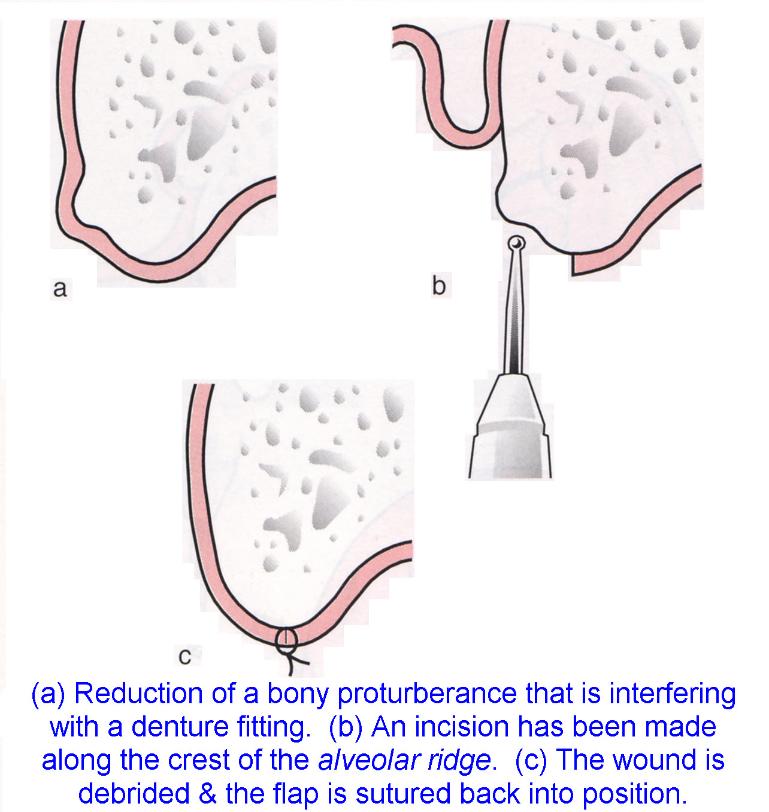Alveoplasty (Alveoloplasty)
An alveoplasty (also called an alveoloplasty) is a surgical procedure that smoothes or re contours the jawbone (s).
An alveoplasty is done in areas where teeth have been removed or lost (especially if a dental clearance has been done).
An alveoplasty can be done alone but is usually done at the same time that teeth are extracted.
When teeth are extracted, the residual dento-alveolus / alveolar ridge (jaw bone ridge) can present irregularities, undercuts or bone spicules (sequestra), which, if not removed before placement of the partial or complete denture, can lead to injury and stability / retention problems of the denture.
If the alveolar ridge is suspected of presenting abnormal shape after the extraction of one or more teeth, in order to avoid such a possibility, an alveoloplasty must be performed at the same surgical session.
Some patients require minor oral surgical procedures in order to properly fit a denture and ensure comfort. In order to properly fit a denture, the bone may require smoothing and reshaping.
Frequently, exostoses or tori need to be removed prior to denture insertion.
An alveoplasty also aims to facilitate the healing procedure as well as the successful placement of a future prosthetic restoration.
Faster healing is important for certain people, such as cancer patients. They may need to have decayed teeth extracted before they receive radiation therapy to the head or neck. Radiation can ‘dry up’ the salivary glands and reduce blood flow to the jaw, increasing the risk of further decay and infection of the jaw bones (osteo-radio-necrosis). Once the teeth are removed, radiation therapy cannot begin until the sockets are healed.
Alveoplasty will help the area heal faster so therapy is not delayed. In this case, alveoplasty may need to be done even if only a single tooth is removed.
An alveoplasty can be ‘simple’ and can be slightly more involved (radical, inter-radicular / inter septal).


